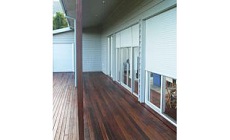

About
We Are a family run Business that aim to help people in the purchase of Building products . With over 40 years expereince in the building supply industry we aim to do our best in helping people find the right product or at least point them in the right direction to companys that can help.
Brochures and links
Tasmanian Oak
Botanical Name: Eucalyptus delegatensis, Eucalyptus obliqua and Eucalyptus regnans
,strong>Other Common Names:
Tasmanian Oak is the name used for three almost identical species of eucalypt hardwoods that are normally marketed collectively. E. delegatensis grows at higher altitudes, while E. regnans is found in wetter sites. E, obliqua has a wide distribution, occurring in wet forests but also extending into drier areas.
Tasmanian Oak is a warm, dense and resilient hardwood. It works extremely well and produces an excellent finish. It can be used in all forms of construction as scantlings, panelling and flooring, and can be glue-laminated to cover long spans. Veneers, plywood and engineered products are available. It is also a popular furniture timber, and Eucalypt fibre is sought after for reconstituted board and production of high quality paper.
Tasmanian Oak is light in colour, varying from straw to reddish brown with intermediate shades of cream to pink. It is recognised for its excellent staining qualities, which allow ready matching with other timbers, finishes or furnishings.
The name Tasmanian Oak was originally used by early European timber workers who believed the eucalypts showed the same strength as English Oak.
Eucalypts are light demanding and grow best where they are not overshadowed. Regeneration occurs after fire, and seedlings establish best on bare mineral soil in the absence of leaf litter. In Tasmania, eucalypts may live for 400 years or more and regularly attain a height of 70m; some individuals have been recorded as reaching 100m. Old growth trees may be 3-4m or more in diameter.
Over 1 million hectares of eucalypt forest on public land are managed for sustainable multiple uses that include tourism, recreation, timber production, and conservation. There are also 2.7 million hectares of land secured in dedicated reserves in which logging is not permitted. These reserves comprise 40% of the area of the state. A substantial area of forested land is owned privately and managed for its timber production.

Gallery







